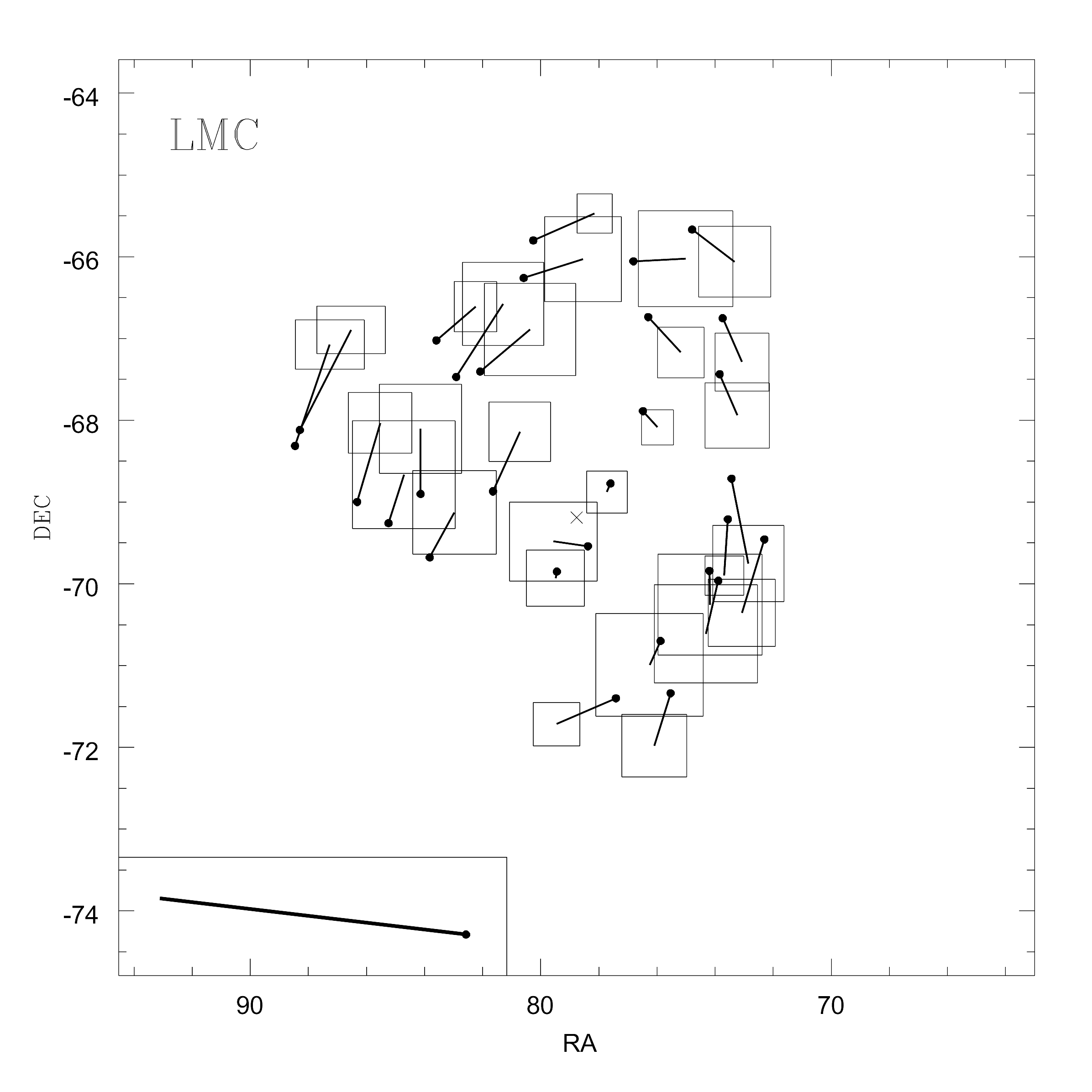IoW_20160916 - Gaia
Image of the Week |
|||
Gaia data made it quickly into a scientific study |
|||
 |
|||
|
Spatially variable component of the observed proper-motion field for the Large Magellanic Cloud centred on the dynamical centre (cross). Clockwise rotation is clearly evident. Solid dots show the positions of 29 Gaia stars. Their proper-motion vector is shown as obtained from Gaia Data Release 1 (TGAS), minus the centre-of-mass proper motion (shown in the inset on the bottom left). Proper-motion vectors have a size that indicates the mean predicted motion over (arbitrarily) the next 7.2 million years. Open boxes at the end of the vectors approximate the 68.3% TGAS proper-motion uncertainties. |
|||
|
The Gaia mission and the first release of its data has been eagerly anticipated by astronomers worldwide. This is exemplified by the fact that at least one astronomical paper based on Gaia data was already submitted to a refereed journal on the day of the release. The work compares the Gaia proper motions against Hubble Space Telescope (HST) values. STScI astronomers Roeland van der Marel and Johannes Sahlmann (ESA) used Gaia data release 1 (DR1) to study the proper-motion fields of the Large and Small Magellanic Clouds (LMC and SMC). They used the Tycho-Gaia Astrometric Solution (TGAS) to study the proper motions of 29 stars in the LMC (and 8 stars in the SMC). The study shows that the Gaia proper motions have similar accuracy and agree to within the uncertainties with existing HST measurements. Since TGAS uses different methods with different systematics, this provides an external validation of both data sets and their underlying approaches. Also in agreement with prior HST studies, the TGAS LMC proper-motion field clearly shows the clockwise rotation of the disk, even though it takes the LMC disk more than 100 million years to complete one revolution. The implied rotation-curve amplitude for young LMC stars is consistent with that inferred from radial-velocity measurements. Comparison of the proper-motion and line-of-sight rotation curves implies a kinematic LMC distance modulus m-M = 18.53 +/- 0.42, consistent but not yet competitive with photometric methods. These first results from Gaia on the topic of Local Group dynamics provide a clear indication of how future Gaia data releases will revolutionise this field. Journal article, submitted to ApJ Letters. |
|||
|
Credits: Roeland van der Marel (STScI) and Johannes Sahlmann (ESA) [Published: 16/09/2016] |
|||
- Removed a total of (9) style text-align:center;
- Removed a total of (6) style text-align:justify;
- Removed a total of (1) border attribute.
- Removed a total of (1) cellpadding attribute.
- Removed a total of (1) cellspacing attribute.
Image of the Week Archive
- Removed a total of (1) border attribute.
- Removed a total of (1) cellpadding attribute.
- Removed a total of (1) cellspacing attribute.








































 Sign in
Sign in
 Science & Technology
Science & Technology